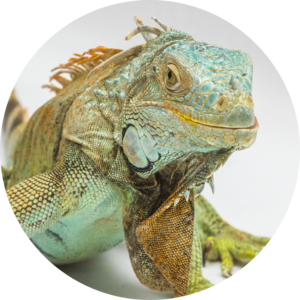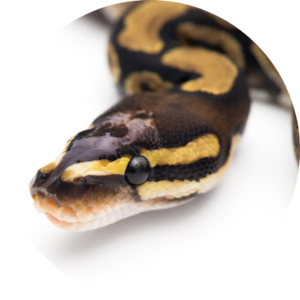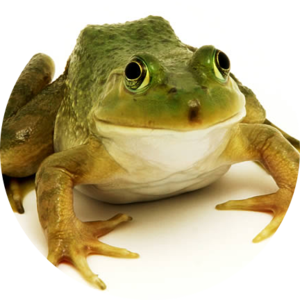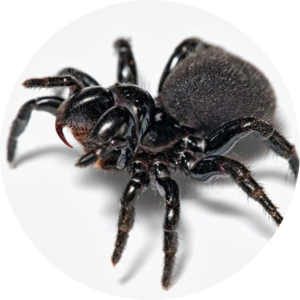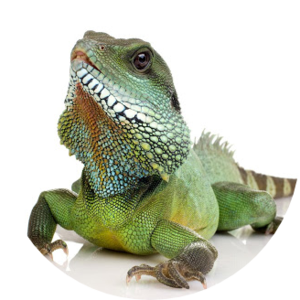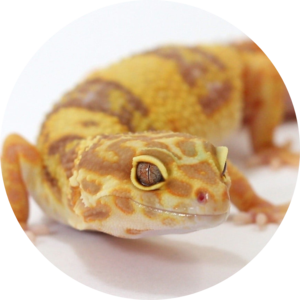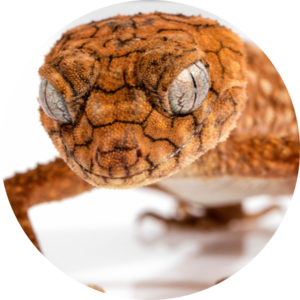About Your Saltwater Fish
**This care guide refers to fish-only aquarium maintenance and does not address reef setups or maintenance.**

LIFE SPAN:
3-10+ years depending on species
AVERAGE SIZE:
1” to 12” + depending on species
WATER TEMPS:
76-78 ℉
WILD HISTORY:
The majority of saltwater aquarium fish come from tropical to sub-tropical regions of the world. Unlike freshwater fish, most saltwater fish require similar water parameters. Size and temperament can vary considerably between fish, even between fish found in the same part of the world. Knowing which saltwater fish coexist peacefully can be a difficult task. Many saltwater fish are still wild caught although a few species are captive bred. Ongoing research is helping to develop methods for captive breeding in hopes of reducing collection from wild populations. To help reduce the number of fish collected from the wild, try to buy captive bred fish whenever possible.
PHYSICAL CHARACTERISTICS:
Saltwater aquarium fish come in a variety of shapes, sizes, and colors that are often more dramatic or vibrant when compared with freshwater fish. However, they all share basic physical characteristics such as gills used for breathing, a lateral line organ on their side to sense vibrations (look closely!), and fins for moving around in their environment.
NORMAL BEHAVIOR & INTERACTION:
Most fish are diurnal, or most active during the day, though some species are nocturnal, or most active at night.
NOTE: Many fish can be housed together in “community” aquarium setups. However, there are many that do not get along well with each other or grow large enough to eat their tank mates! Picking out which fish will coexist peacefully can be a tricky task. It is best to consult other experienced keepers, knowledgeable fish store employees, or your exotics veterinarian for guidance in picking the right fish for your aquarium.
DIET:
Aquarium fish vary in their dietary requirements. The majority of fish are either carnivores or omnivores with a few species being herbivores. Research the type of fish you want before buying it to determine its dietary requirements. Many commercial diets are available that tailor to specific groups of fish. This is extremely important for saltwater fish as many are dietary specialists. The following groups of fish benefit from receiving a high amount of vegetable matter in their diet:
Surgeonfish
Tangs
Unicornfish
Rabbitfish
Angelfish
Algae-eating Blennies
For these fish, terrestrial vegetables are not recommended. Instead, they should be fed a mix of dried seaweed and prepared foods containing a high percentage of marine algae. Some algae growth should be allowed in tanks containing these fish as it is essential to their diet and well being. Small carnivorous/omnivorous fish can be fed frozen foods such as brine shrimp, bloodworms, beef heart, or mysis shrimp. Some companies even make a frozen marine medley containing various protein and plant products. Larger carnivorous fish should be fed high protein foods such as market shrimp, earthworms, clams/mussels, or frozen fish.
FEEDING:
Most saltwater fish should be fed at least twice daily. This is most important for the herbivorous “grazers” mentioned above. These fish should have food available all day long. Saltwater fish diets should be split 50:50 between prepared foods and frozen/live/freeze dried foods. Larger carnivorous fish should be fed once daily while young and every other day to two to three times per week once fully grown. It is important not to overfeed your fish. Overfeeding leaves un-eaten food to decompose in your aquarium. Decomposing food adds extra waste compounds to the water which in turn cause increased algae growth. All the food given should be completely consumed within 5 minutes. If a lot of food is left over after 5 minutes, cut back the amount fed.
RECOMMENDED SUPPLIES:
| Aquarium - though these range in size from 5 gallons to over 100 gallons, a minimum size for saltwater fish should be 20 gallons | Light and hood - saltwater fish look best under actinic or high Kelvin rating fluorescent lights. |
| Aquarium heater - either a hang-on-the-side or submersible variety is acceptable | Thermometer - to monitor the aquarium’s temperature |
| Filter and protein skimmer - The filter and protein skimmer should be large enough to handle the size tank and number of fish in the tank. | Gravel and tank decorations - A 1-2 inch layer of crushed coral gravel is recommended for most tanks. |
| Water test kit - necessary to ensure proper water quality. | Air pump, airline hosing, and airstone - required to make sure water is well oxygenated. |
HOUSING & ENVIRONMENT:
ENCLOSURE SIZE: The enclosure should be a solid glass or acrylic aquarium. Aquariums vary from 5 gallons to over 100 gallons but should be a minimum of 20 gallons for saltwater fish. The size aquarium depends on the fish being kept. Saltwater fish cannot be kept in the same density as their freshwater counterparts. Research the type of fish you wish to have and learn its mature size. For larger fish, the enclosure should be at least 1.5x as deep as the fish’s mature size and twice as long. Remember: IT IS NOT TRUE THAT A FISH WILL ONLY GROW AS LARGE AS ITS AQUARIUM!!
AQUARIUM SETUP: Once you have set up your aquarium, the system needs to cycle. Cycling refers to the nitrogen cycle within the aquarium. Fish produce waste as ammonia. Beneficial bacteria convert toxic ammonia into slightly less toxic nitrites and finally nitrates. Nitrates are non-toxic except when present in very high concentrations. When you first set up an aquarium, these beneficial bacteria are not present and the ammonia level will rapidly increase. As the first type of good bacteria becomes established, ammonia levels drop and nitrites rise rapidly. As the second type of good bacteria becomes established, nitrite levels drop and nitrates rise gradually. Water changes remove these accumulated nitrates. This entire cycle, from ammonia spike to gradually increasing nitrates, takes roughly 1-2 months and may produce some transient cloudiness in the water. For this reason, it is important to buy only a few fish at first: 5 or less. After the first month, once the nitrogen cycle is nearly established, it is OK to add a few fish at a time until your aquarium is fully stocked. NEVER BUY ALL YOUR FISH AT ONCE FOR AN AQUARIUM. YOU RISK CAUSING A TOXIC AMMONIA OR NITRITE SPIKE WHICH CAN KILL ALL THE FISH!
FILTRATION/PROTEIN SKIMMER: The filter and protein skimmer are the most important pieces of equipment in an aquarium setup. Filters and skimmers remove solid fish waste, remove dissolved chemicals from the water, and provide surface area for beneficial bacteria that detoxify harmful waste compounds in the water. In general, saltwater aquariums require higher biological filtration than do freshwater aquariums. There are many types of filters and skimmers from hang-on-the-side to canister filters to sump/refugium filters. The most important aspect of picking the right filter is making sure the filter is rated to the size aquarium you have. This information will be on the filter packaging. It is always better to over-filter an aquarium than under-filter. Additionally, larger fish require larger filters for the same size aquarium - they produce a proportionately larger amount of waste.
AERATION and WATER FLOW: An air pump, airline hosing, and airstone are required to provide oxygenation to the water. Air pumps are sold based on the size aquarium they are used for. Submersible powerheads work well to help circulate water within an aquarium. These too are rated for the size aquarium you have based on their gallon per hour (gph) flow rate.
LIGHTING: Fish require a clear day/night cycle to do well. Since most saltwater aquarium fish come from tropical locations, the day night cycle should be as close to 12 hours on/12 hours off as possible. This is easily accomplished by buying a light timer. Keeping the lights on for more than 12 hours contributes to excess algae growth. Lighting for saltwater setups should be actinic or high Kelvin rated fluorescent.
GRAVEL AND DECORATIONS: Gravel for a saltwater aquarium should be crushed coral or any other calcium-rich material. Tank decorations largely depend on personal preference. You can use store-bought replicas, rocks, non-living coral, or any combination of these!
COVER: Make sure the aquarium has an escape-proof solid glass or plastic cover. It should fit snugly onto the tank and have an area in the back to cut out sections for the filter/skimmer, heater, and airline tubing to enter.
TEMPERATURES: Aquarium temperatures should be monitored closely and kept at the temperatures listed at the top of this care sheet. An appropriately sized aquarium heater should be used to maintain proper temperature for your fish. Sudden drops in temperature should be avoided as they stress fish and weaken their immune systems.
WATER QUALITY: Water quality parameters are important to monitor. Changes in water quality can stress your fish and increase their susceptibility to diseases and parasites. The following water parameters are the most important to monitor. Pet stores or your exotics veterinarian who works with fish can test water for you.
Salinity: measures the concentration of salt in the water; most fish will be comfortable at specific gravity values between 1.020 and 1.026.
pH: measures the acidity or alkalinity of water.
Ammonia: toxic to fish; due to the higher pH of saltwater, ammonia is more toxic in saltwater than in freshwater aquariums; it is excreted by fish and produced by decaying material (such as uneaten food).
Nitrite: toxic to fish, it is the first product of the nitrogen cycle.
Nitrate: only toxic in high concentrations, it is the end product of the nitrogen cycle, removed via water changes.
Alkalinity/Carbonate Hardness: measures the buffering capacity of your water/its resistance to pH changes.
General Hardness: measures the total hardness of your water.
 ACCLIMATING AND QUARANTINING NEW FISH:
ACCLIMATING AND QUARANTINING NEW FISH:
Acclimating and quarantining new fish are important topics to cover. Simply dumping fish into an aquarium with different water quality parameters from their current water can shock the fish’s system and sometimes even cause death. Additionally, new fish can carry parasites and diseases that your fish may not have. Introducing new fish can therefore cause a disease or parasite outbreak with your previously healthy fish. New fish should be quarantined in a separate aquarium for 4 to 6 weeks. If any disease or parasite problems arise during the quarantine process, your regular tank full of your other fish are not exposed. If such a problem arises, we recommend contacting your exotics veterinarian for help diagnosing and treating the problem.
There are two ways to acclimate fish. The first method is to float the bag containing the new fish in your aquarium for 15 to 20 minutes to equalize temperatures. At that point you can add a ½ cup to 1 cup of tank water to the bag (depending on the bag size). Wait another 15 to 20 minutes and then add another ½ to 1 cup of tank water to the bag. Repeat this cycle until you’ve added 4-5 times the original volume of water to the bag containing your new fish. At this point, catch your new fish out of the bag and release it into your quarantine aquarium. Discard the bag and water that the new fish arrived in. With the second method, dump the new fish and its water into a 5 gallon container (a clean bucket works well). Using airline tubing, start a siphon and trickle water into the bucket containing the new fish. After about an hour, or when the water volume in the bucket has more than tripled, you can net your new fish out of the bucket and introduce it to your quarantine tank.
HABITAT MAINTENANCE:
Water changes are the most important aspect of keeping happy healthy fish! A partial water change, up to 1/3 of the total water volume, needs to be done every two weeks to remove built up wastes and harmful dissolved compounds. The easiest way to do water changes is with a gravel vacuum. A gravel vacuum is a large diameter tube connected to thinner, longer tubing. A siphon is started with the waste water collected in a bucket or poured down the drain. The gravel vacuum sucks waste out of the gravel without removing the gravel itself. Replace removed water with dechlorinated water of the same temperature and salinity as the aquarium water. If using tap water, a commercial tap water conditioner must be used to remove chlorine and chloramines. Alternately, well water or spring water may be used to replace the removed water. Many commercially made salt mixes are available for re-constituting sea water for water changes.
NEVER COMPLETELY EMPTY AND CLEAN AN AQUARIUM - YOU WILL REMOVE BENEFICIAL BACTERIA THAT DETOXIFY HARMFUL WASTE COMPOUNDS!
The media in an aquarium’s filter should be changed once a month to once every other month. Biological filter media should be rinsed in non-chlorinated sea water to remove debris and should not be completely changed. Never change all filter media at once unless your filter uses single replaceable cartridges.
Spot clean your aquarium as needed to remove un-eaten food and scrape algae from the walls of the tank.
SIGNS OF A HEALTHY ANIMAL:
Healthy fish have vibrant colors, smooth skin, and swim normally, with fins held away from the body. You may even notice courtship or display behavior between fish. Healthy fish will also have a voracious appetite, often learning to come to the front of the aquarium as you approach to feed them. We recommend routine water testing daily to weekly for a brand new aquarium setup and monthly for an established aquarium. Many pet stores or your exotics veterinarian who works with fish can test water for you. We also recommend a physical exam with an exotic pet veterinarian for pet fish if you notice a change in appetite, swimming, breathing rate, or if you notice sores/growths on the fins and/or body of your pet. Physical exams are done using reversible sedation at your exotic veterinarian’s office.
SIGNS OF ILLNESS:
For most conditions, see your exotic pet veterinarian, who can properly address and treat your pet. Most diseases in fish cause identical symptoms - basing treatment on how a fish looks often leads to mis-diagnosis and inappropriate treatment for diseases and/or parasites.
SOME COMMON PROBLEMS INCLUDE:
| HEALTH ISSUE: | SYMPTOMS: | TREATMENT: |
|---|---|---|
| External Parasites | Rubbing on objects in the aquarium (flashing), small sores on the skin and fins, heavy breathing, clamped fins, white spots on the body | See an exotic pet veterinarian |
| Internal Parasites | White stringy feces, decreased appetite, thin stomach or swollen stomach, clamped fins | See an exotic pet veterinarian |
| Bacterial Infections | Decreased appetite, small sores on the skin and fins, rubbing on objects in the aquarium (flashing), swollen stomach, swollen eyes, clamped fins | See an exotic pet veterinarian |
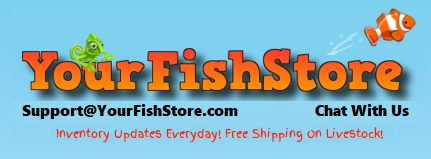

 ACCLIMATING AND QUARANTINING NEW FISH:
ACCLIMATING AND QUARANTINING NEW FISH: